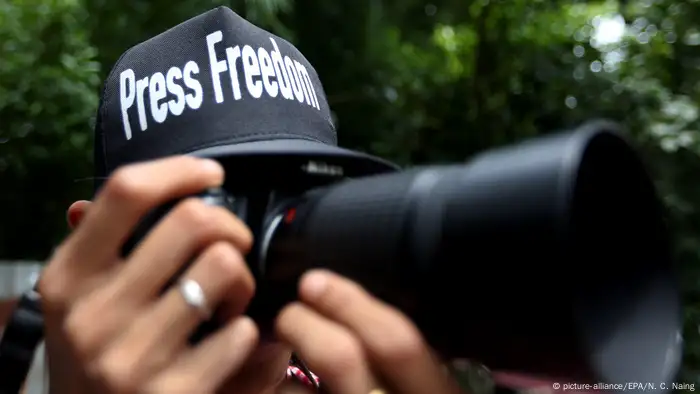Approach: Journalistic Training
Training journalists as frontline fact-checkers
Journalists are the first line of defense against information abuse and fake news. Specific training helps strengthen their ability to respond to the threat on an ongoing, everyday basis.
What is this approach?
Many news consumers do not question the content they access online, in newspapers and on television. This means it is essential for journalists to thoroughly fact-check their work and ensure they are not contributing to the spread of misinformation.
This approach focuses on journalists as the key actors able to prevent the spread of fake news and misinformation. Rather than relying on experts or specialists, journalists learn to spot misinformation and malicious disinformation, and to redirect their reporting in ways best able to counteract its effects.
What kinds of misinformation does this approach most effectively address?
Journalistic training aims to deal with a broad spectrum of misinformation from everyday rumors to full disinformation campaigns by dedicated state actors.
What are the advantages of this approach?
The advantages of journalistic training as an approach is its flexibility and its long-term impact. Journalists are instructed in methods of manipulation used by bad faith actors and the dynamics of how fake news goes viral. This approach aims to provide a general shield against journalists accidentally taking part in the spread of fake news, but also equips them to counter mis- and disinformation in their everyday work. Journalists can be trained to deal with high-stress fact-checking situations such as rapid-response actions during a political debate or how to cope with a disruptive campaign by a malicious and well-funded government. This type of training and support, from organizations such as DW Akademie, is particularly important for media outlets with limited resources, as they cannot depend on generous reporting budgets or connections to outside experts. Journalistic fact-check training is most often conducted by NGOs, journalism schools or in-house within media outlets.
What are some of the challenges for this approach?
The major challenge of the journalistic training approach is that it places journalists in the position of having to consider specific areas of knowledge that experts are possibly more qualified to deal with. From a logistical perspective, there is also the problem of connecting qualified trainers with the journalists that desire such training. There has to be an interest and willingness to learn about fact-checking on the part of the journalists who may already see themselves as competent professionals who do not need additional assistance. Outlets may have to spend money to hire a trainer, and to compensate journalists for their time.
How does it compare to other approaches?
Rather than countering specific campaigns or tackling the misinformation related to a single event, this approach is more oriented towards equipping journalists to perform fact-checking duties as part of their everyday work. Compared to other longer-term approaches, it is far less resource intensive than investigative journalism and more organized than guerilla fact-checking.
What are some examples of best practice?
DW Akademie: Training Programs in Myanmarand Mongolia
Konrad Adenauer Stiftung: Media Africa Program
Nuts and Bolts
Costs: varies depending on organization providing the training;
Funding: grants from civil society organizations or internal resources from media outlets;
Topics: society, international and national politics, military, the economy.
Related resources
Poynter’s Institute: "Hands-On Fact-Checking: A Short Course"
Verification Handbook: A definitive guide to verifying digital content for emergency coverage
DW recommends
- Date 17.07.2020
- Author Julia Sittmann
- Feedback: Send us your feedback.
- Print Print this page
- Permalink https://p.dw.com/p/3edgb
- Date 17.07.2020
- Author Julia Sittmann
- Send us your feedback.
- Print Print this page
- Permalink https://p.dw.com/p/3edgb

